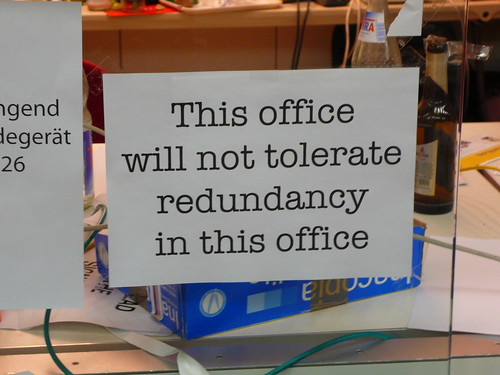We’re all part of multiple social media networks now. Maybe it’s Twitter and Facebook, with a little Ping.fm thrown in with FriendFeed and LinkedIn on the flipside. Don’t even get me started on public Google Waves.
And as we’re all getting on more and more networks, our paths are bound to cross at more and more points. Which is why I think it’s more important than ever to know your network and know your audience.
I’ll only post certain types of content on LinkedIN. Twitter gets a bit more loose, and Facebook is more of personal likes and funny stuff. Not a lot of business content there. But that’s because most of my ‘friends’ on Facebook aren’t following me on Twitter or aren’t connected to me on LinkedIN (emphasis on the MOST in that sentence). As we’re migrating, more people are starting to use Twitter or LinkedIN (using those big 3 as an example because it’s where I spend most of my time) and are getting my favorite links, blog post notifications and recommendations on multiple platforms.
From a marketing perspective this is kick-ass… right? More people consuming messages (even duplicate ones) on multiple social media channels from a trusted source is a good thing, if I’m digging your website or movie, or blog, or whatever.
But flip the coin over and I think there’s a point where pushing the same content through duplicate channels now becomes an interruption as opposed to a conversation. If you’re following me on Twitter, as well as being friends on Facebook and colleagues on LinkedIN – there are times where I’m sure you’ve seen the same piece of content across all of your media streams from me…… sorry. Maybe this post is one of them.
The problem is that I want to be able to tell my whole network about something I think is cool, and since we’re not all consolidated onto one channel, some people are getting double doses. At the root of this is the notion that I think we all want to be influencers. We all want to be the person that found that next cool thing, and so hitting everyone in our own network seems like an easy way to share content.
But I think that this will start to come at a price. I’ve already un-friended people from different networks because I haven’t found their content useful or that it’s been too repetitive or spammy. While I hope the same thing hasn’t happened to me, there’s no guarantee that it hasn’t. I also recently was intrigued by my friend Rob Bluey’s post on how he’s going to be treating his Facebook network in 2010. If 2009 was a planting year for social networks, 2010 may be a year of pruning or at least shaping.
What’s the point? I think its that we need to tailor your content to fit the network and be conscious of the people who may be receiving multiple forms of the same message. Trust that if you’re putting out good stuff that people will use a different tool in order to receive that content. You won’t need to force feed them. Chris Brogan does a fantastic job of this. His FB posts are different (not always, but enough) from his Blog posts. Most importantly though, if you want some really useful content, he’ll only offer that through his newsletter. He knows that his content has value and that if people want that premium content, well, they’ll just have to deal with subscribing.







